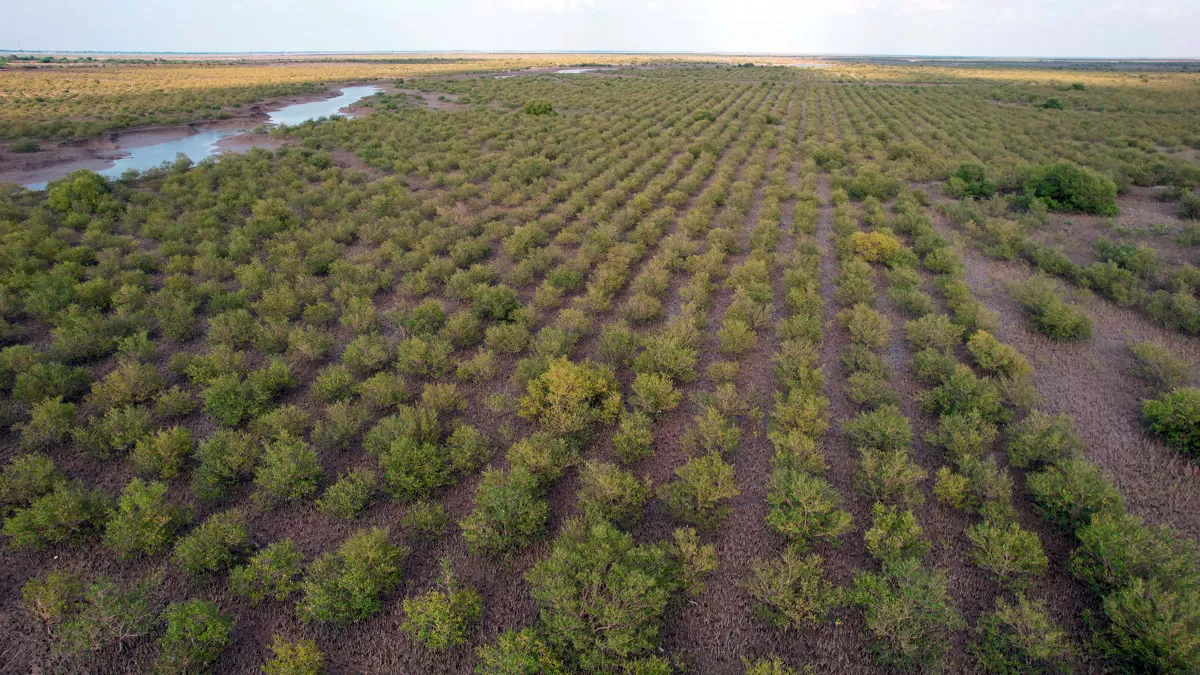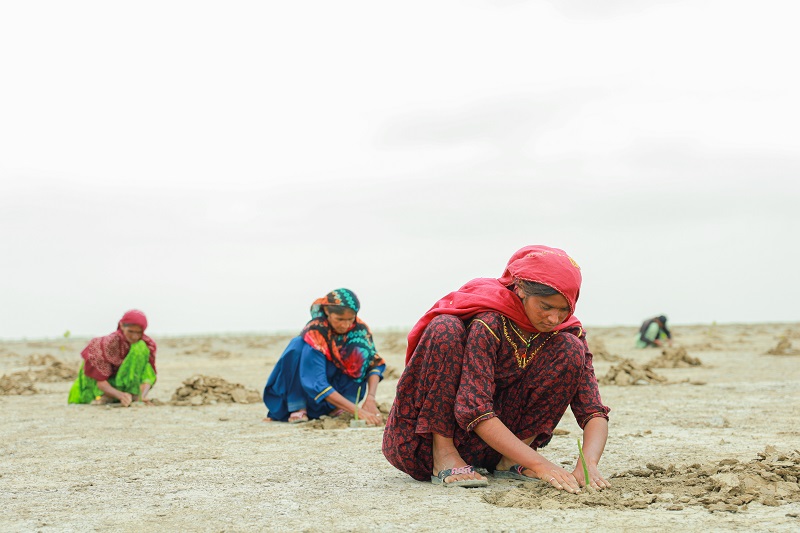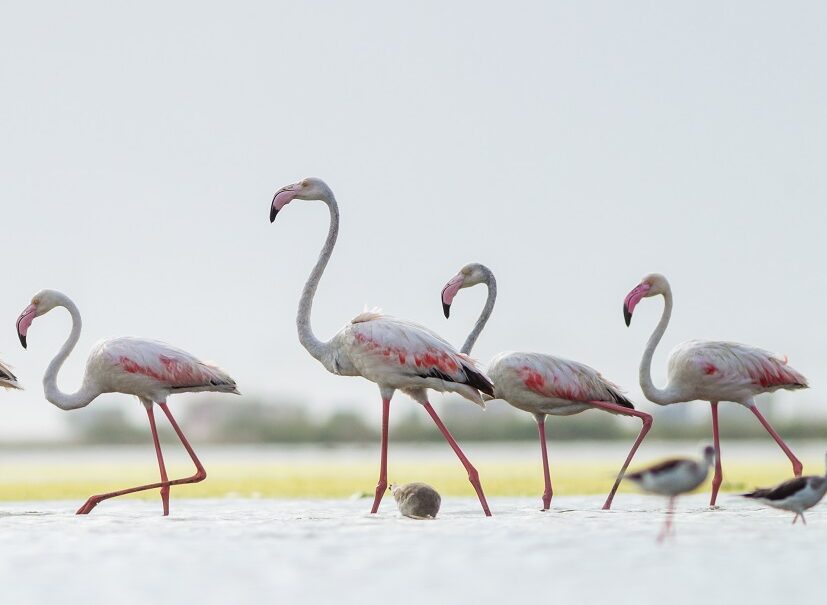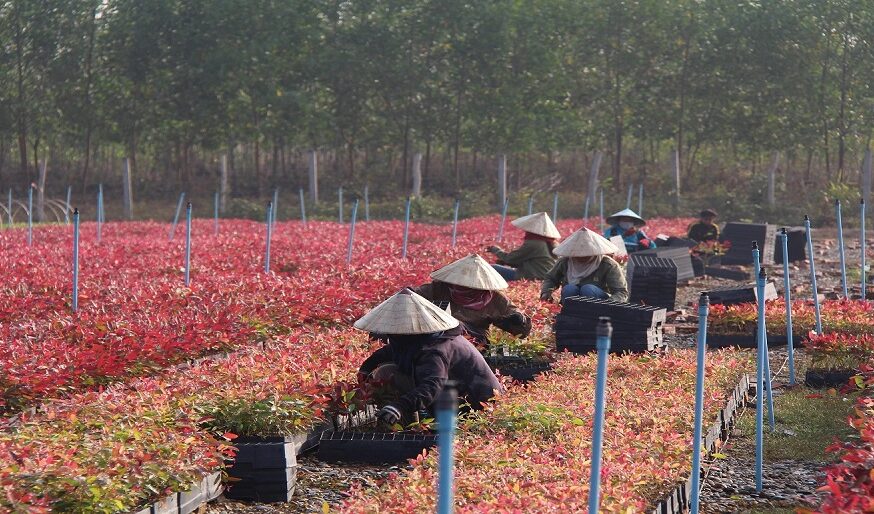Neatly planted mangroves stretch hundreds of thousands of hectares – a growing beacon of climate mitigation within a sea of containerships and fishing vessels. Bright green and full of life, these mangrove forests pose a striking juxtaposition to the industrialisation of Karachi’s port located at the far north of the project.
At the beginning of March, two members of our team were fortunate enough to visit Karachi – a sprawling microcosm of Pakistan and home to more than 20 million people. This was no tourist trip; CEO Ana Haurie and Director of Portfolio Management, Chris Villiers, were touching base with one of our flagship portfolio projects: Delta Blue Carbon.
Blue carbon refers to marine and coastal ecosystems – such as mangroves, seagrass meadows and tidal marshes – which can remove carbon dioxide from the atmosphere. We have recently published an article explaining the term and these ecosystems’ roles in climate mitigation if you would like to learn more.

Delta Blue Carbon currently holds an impressive record. As the world’s largest blue carbon project, it is working to conserve and restore mangrove forests across 350,000 hectares of tidal river channels off the southeast coast of the Province of Sindh. Reflecting on her first impressions of the project, Ana said:
“The scale of the project was massive and monumental. When you read or see a PowerPoint, it’s hard to get the full impact of the work these projects are doing. But when you visit a project first-hand, it becomes even more meaningful.”
Chris was also struck by the scale of the project:
“It’s hard to process the extent of the restoration,” he said, “Even spending two days on a boat, we touched only a tiny corner of it.”
The scale of mangrove operations
Such is the scale of operations in Karachi that Delta Blue Carbon has planned mangrove planting schedules stretching to 2029. These plans are ambitious – in 2023 alone, the team hopes to have planted an additional 20,000 hectares of land. Ana remarked on the sheer logistics of these plans:
“When you see the project up close, you realise it’s such a feat to actually get it done! That was another thing which dawned on me was the determination that you have to have to make something like this a reality – it’s so impressive,” she said.
This large-scale project is the result of a pioneering public private partnership between the government of Sindh and a private project developer, Indus Delta Capital. Both Ana and Chris observed that local governments participation has been instrumental to the project’s success.
With over 20 years of planting experience, the Government of Sindh’s Forestry Department has shared valuable knowledge on the most appropriate tree species for the region to ensure resilience and biodiversity benefit. Although four mangrove species are planted in the project area, Rhizophora and Evercinia are most common due to the prevalent local conditions. This highlights the importance of working with local experts who can ensure that reforestation is truly context specific and appropriate for the ecosystem in question.

Community participation
An estimated 42,000 people live in the project area and the team are confident that at least 20,000 have, in a variety of ways, benefited from its existence. Chris and Ana explained the four main ways in which people can participate:
- The planting season brings with it ample temporary employment opportunities. In teams of 20 to 30, people set out to plant mangrove saplings. They are not immune from competition – the team proudly declared that they hold the Guinness World Record for the most planting in a single day!
- Others gain temporary employment as re-stockers. These teams sail out to areas planted 10 months previously to replace any trees which have failed to grow. From here, the mangroves move to a state of self-sufficiency as they are fantastic self-seeders. With the right conditions, each area can become densely populated within 5 years of planting.
- Local families or other members of the community can also take their own initiative to supply propagules (mangrove seeds) to the project developer for future planting in return for payments. Paid by the bag load, propagule collecting has become rather popular in the area. Ana and Chris recount how they saw a group of men building a high bank on the mud flats that would act as a collection point for seeds they planned to gather in the coming weeks.
- The community also puts forwards certain individuals to act as stewards of specific areas of the project through the Mangrove Stewardship Program. . These individuals sign an agreement to protect the planted areas from harm and receive a salary in exchange for their labour. To date, 136 people have signed up to the program.
Considering these opportunities for community participation, Ana remarked on a palpable feeling of ‘collective buy-in’ from many local people. Chris voiced his agreement:
“We heard directly from people that they saw tangible value in the project. It feels like it is making a real difference to their lives.”
“That’s what the carbon markets can do,” Ana added. “It’s for the climate; it’s for biodiversity and it’s for the communities,” she paused for thought. “And that almost becomes more important.”

Share this article


